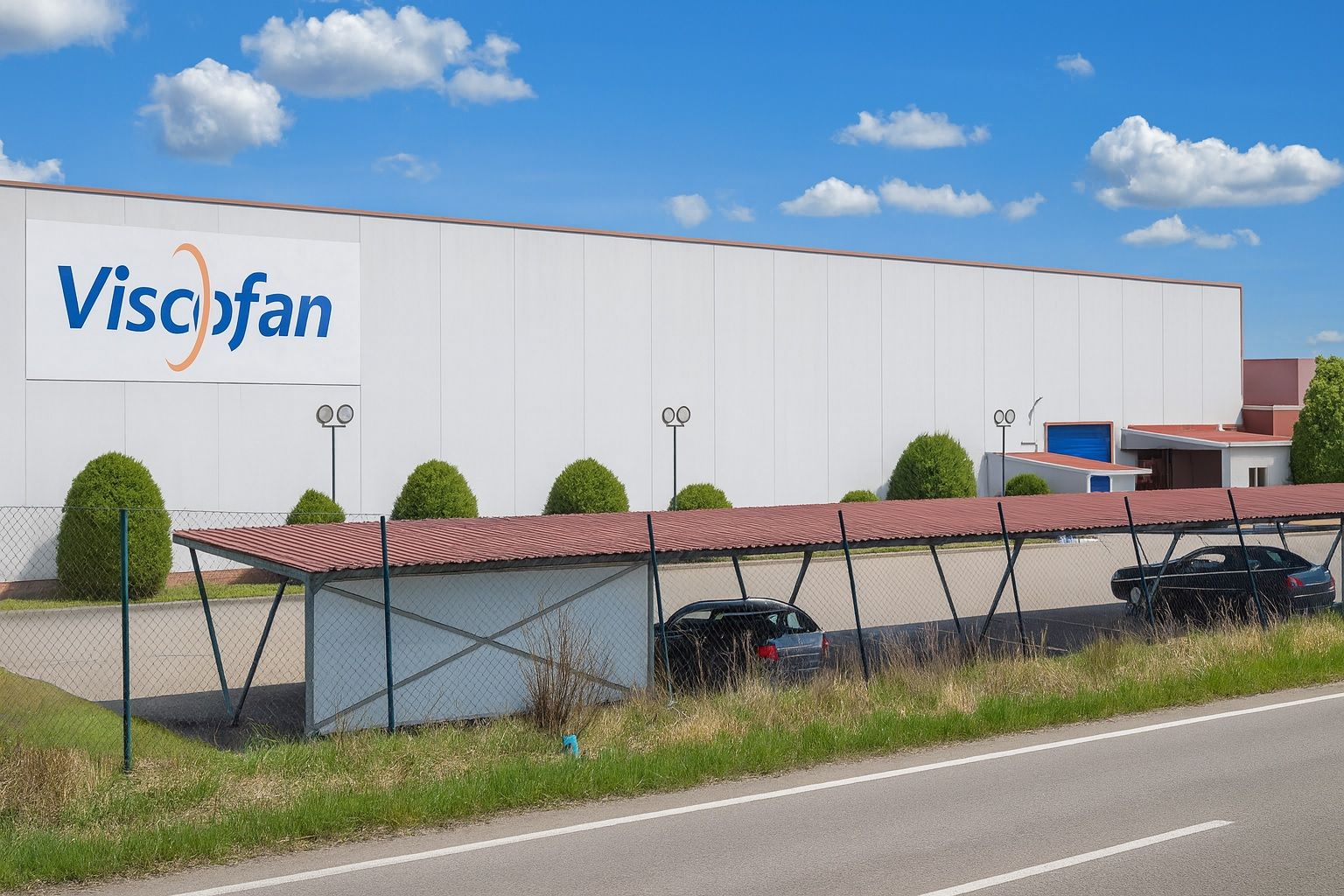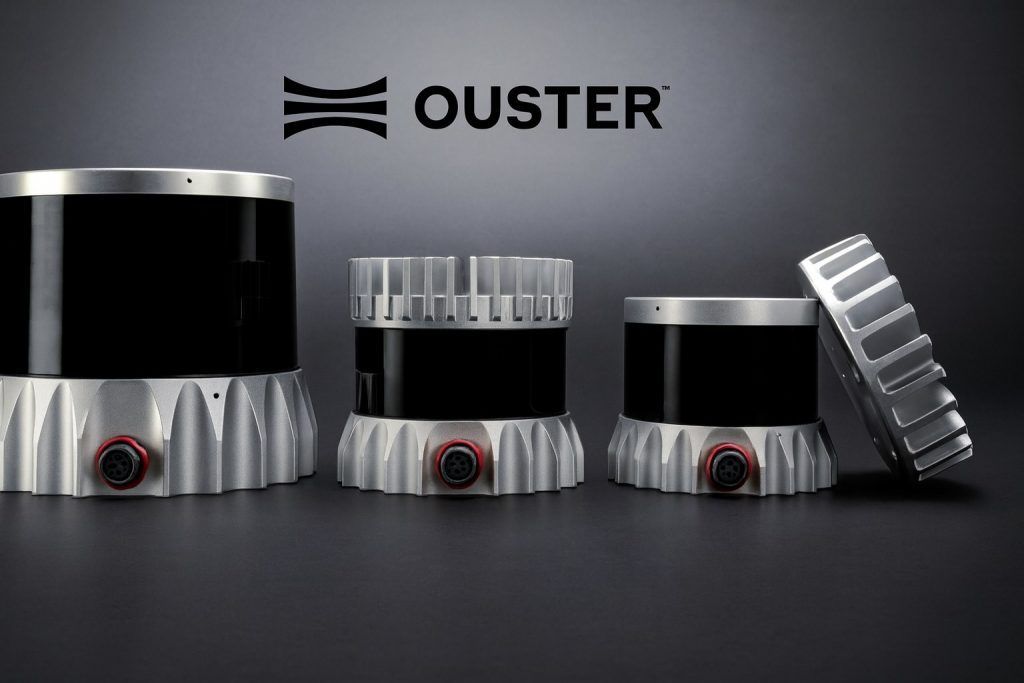- Share Price (Oct 15, 2025): ~€50.75 (trading early Oct 15). Down ~13% in 5 trading days [1] after a US-based report. YTD return ~–17%.
- Market Cap: ≈$3.1 billion [2].
- Valuation: P/E ~15x (trailing) [3]. Dividend yield ≈4.9% [4] (generous by European standards).
- Latest Earnings (Q2 2025, to June 30): Sales €311.5M (+2.7% YoY), EBITDA €76.3M (+9%), Net Profit €38.4M (+3.1%) [5] [6]. H1 2025 net profit was €69.8M. CEO Canales said results were “solid” and broadly in line with guidance [7].
- Recent News (Oct 2025): On Oct 14–15, an investor-subsidized media report (Hunterbrook) accused Viscofan’s US plant (Danville, Illinois) of toxic emissions. Viscofan denied categorically any violations, stating the Danville plant “complies with strict environmental measures” and has no serious breaches [8]. Earlier (Sep 2025) Viscofan’s Czech subsidiary announced a new plant land acquisition (Ceske Budejovice) [9]. In mid-Sep, Viscofan approved a scrip dividend of ≥€1.40/shr (cash to pay Dec 17) [10] and launched a €40M share buyback (~680K shares, 1.46% of capital) [11].
- Industry Trends: Artificial casing markets are growing. Global collagen casings (sausages) are expected to expand ~6% p.a. to ~$1.9 B by 2032 [12], driven by rising meat processing demand. Global meat consumption is projected to grow modestly (≈47.9 Mt over 2025–2034, ~0.9 kg per capita/year) [13]. Viscofan is also innovating with plant-based “vegetarian” casings for meat alternatives [14] and edible packaging, aligning with sustainability trends.
- Analyst Forecasts: Sentiment is positive. Eleven analysts (TipRanks) rate VIS “Moderate Buy” with an average target ~€70 (≈+15% upside). Investing.com’s consensus (11 analysts) is also Buy, avg target ~€71 [15]. TipRanks Smart Score flags VIS as one of its top-rated names.
Recent Stock Performance and Investor Sentiment
Viscofan’s stock declined sharply in mid-October 2025, reflecting a sudden drop in investor confidence. On Oct 14, shares slumped ~13% intraday – the steepest fall since 2018 – after a US-based news report accused Viscofan’s largest North American plant (Danville, IL) of uncontrolled “toxic” emissions [16] [17]. By Oct 15, VIS.MC traded around €50.7 [18]. This represented about a 5-day loss of –12.7% [19] and brought the 2025 decline near –17%. The sector and Spanish indices showed little special weakness, suggesting the drop was driven by company-specific fear and heavy selling pressure (likely from automated stop-losses and speculation).
Intraday charts (e.g. Investing.com) show high volatility in mid-October, and social media/forums (Investing.com España) report traders scrambling to cover positions. Despite the selloff, trading volume was moderate – implying most selling may have been algorithmic or speculative. Sentiment appears cautious: some retail investors note the share buyback (Sep) and insider buying (minor) as support, but many await clarity on the Danville issue.
Overall, Viscofan shares are trading below prior 2025 highs (~€68), with a P/E that looks reasonable (mid-teens) and a high dividend yield (~5%). Some long-term holders view the weakness as a buying opportunity, while skeptics fear environmental/legal risks in the US. The next catalyst is the Q3 earnings report (Oct 23, 2025) – investors will watch whether volumes and margins hold steady.
Company News & Strategic Developments
Danville Plant Allegations (Oct 2025)
A US media outlet (“Hunterbrook”) – backed by a hedge fund – published an exposé on Oct 14 claiming Viscofan’s Danville, IL plant had repeated environmental violations (air/water emissions of harmful chemicals) and had evaded regulators via “compliance agreements.” This claim triggered an immediate share drop. Viscofan responded the same day via a CNMV filing, “categorically den[ying]” the allegations [20]. The company insisted the Danville plant “complies with strict environmental measures” under US oversight and has had no serious reported breaches [21]. Viscofan emphasized its 30+ year US presence and ~600 US employees, underscoring strong safety and quality records [22].
This episode underscores a reputational risk. For now, investors have little evidence beyond the unverified report, and the CFO pointed out that previous Illinois regulators even considered legal action (June 2025), a nuance picked up by the Spanish press [23]. Overall, management’s swift denial and high regulatory compliance record should reassure long-term investors, but trust may take time to rebuild.
Q2 2025 Earnings (Jul 30)
In late July, Viscofan reported Q2 (June) results exceeding modest expectations. Revenue was €311.5M (+2.7% YoY) [24] and EBITDA €76.3M (+9%, margin 24.5%) [25]. Net profit was €38.4M, up 3.1% [26] (six-month net €69.8M). Management noted that casing volumes and new product sales accelerated, partly offset by a weaker USD that muted profit. CEO José Antonio Canales commented: “We have achieved solid results driven by the acceleration in casing volumes, production efficiencies, and cost savings. Operating performance is in line with the full-year guidance… with the exception of the US$ vs €” [27]. In short, underlying demand and efficiency helped offset currency headwinds.
This earnings beat (analysts expected roughly flat profit) sent VIS shares up ~2% on July 31 [28], before the stock drifted higher into summer. Key takeaways: strong cash generation (vis-à-vis dividend) and growing sales in Asia/Latin America. Net debt remained moderate (~€229M, up from €147M end-2024 due to dividend payouts and buybacks) [29]. The company reconfirmed its full-year EBITDA guidance, all else equal.
Corporate Actions (Dividend & Buyback)
In September, Viscofan’s Board approved its FY2025 capital-repartition plan. It set a scrip dividend (share/cash option) for 2025 and announced a gross interim payout of €1.40 per share (cash pay date Dec 17, 2025) [30]. This interim figure is roughly flat with 2024’s totals, reflecting confidence in cash flow. Additionally, Viscofan launched a share buyback up to €40M (≈680,000 shares, ~1.46% of shares) [31], aimed at capital reduction. The buyback (Sep 22–Dec 31) signals management’s view that the stock was undervalued. Together, these moves boost shareholder return.
New Investments & Geographic Expansion
Beyond headlines, Viscofan continues strategic expansion. In September it confirmed that Viscofan CZ (Czech arm) sold an existing site (600 M CZK) and will buy land near Ceske Budejovice Airport for a new casing plant [32]. Construction begins 2027, operations 2028, total capex ~CZK 1.25 B. This reflects long-term growth in Central/Eastern Europe. In 2024 Viscofan also commissioned a new casing plant in Thailand to serve Southeast Asia (one of the fastest-growing markets) [33]. In 2025 it completed several acquisitions: e.g. 60% of Brazil’s Brasfibra (collagen products) to bolster new bio-ingredient business [34].
Overall, the company is reinforcing its global footprint (21 countries, 24 plants [35]) and diversifying into related areas (collagen biomatrices, edible films, etc.). These long-cycle investments bode well for sustained growth beyond short-term market swings.
Industry & Market Trends
Processed Meat & Casings Demand: Viscofan’s core products serve the booming processed meat industry (sausages, deli meats). Global meat consumption is projected to rise over the next decade (OECD/FAO projects +47.9 Mt, ~0.9 kg per person/year by 2034) [36]. Urbanizing populations in Asia/Africa are driving demand for convenient, uniform sausage products – the prime application for artificial casings. In 2024, the world casing market was roughly €5 billion, with ~56% artificial vs 44% natural gut casings [37]. Viscofan is the clear leader in man-made casings (cellulose, collagen, fibrous).
Sector reports see continued growth: the global collagen casing market alone is forecast to grow ~5.9% annually (from ~$1.26B in 2025 to ~$1.88B by 2032) [38]. Collagen casings (bovine/porcine collagen) are favored in high-speed sausage production for consistent quality. Viscofan also makes cellulose and fibrous casings, and even edible films – capturing more of the value chain.
Sustainability & Innovation: Food packaging is under pressure to be sustainable. Viscofan is investing in bio-based materials: notably “Viscofan Veggie”, a plant-based casing for vegetarian/vegan products [39]. This innovation taps growing alternative-protein trends. It also develops plastic films from recycled polymers and edible spice-infused films [40] [41]. These moves align with rising consumer demand for “clean label” and eco-friendly foods. On the flip side, the plastics packaging industry (EU) faces headwinds (e.g. energy costs, regulation) [42]. However, Viscofan’s focus on food-grade polymers (PA6, EVOH) in small volumes may be less exposed to commodity swings than generic plastics.
Competition & Risks: Viscofan competes with smaller regional casings producers; its scale and IP (trade secrets in collagen processing) are strong moats. Key risks include raw material prices (collagen depends on cattle hides, which can be volatile) and currency swings (its Asian/Latin markets often paid in USD/EUR). The recent USD/EUR weakness was cited as a partial drag on earnings [43]. Another risk: any tightening of food-safety standards or trade barriers (though none imminent).
Regulatory/Geopolitical: The Danville controversy highlights an ESG risk. US environmental regulators had flagged possible cases in mid-2025 (requiring “last resorts” action) [44]. If true, this could lead to fines or compliance costs. Conversely, resolving it quickly (as Viscofan claims) would clear the air. Brexit/EU labor rules seem not directly relevant. China’s slowing imports might dampen pork prices, but Viscofan’s casings also serve poultry/hams etc. On balance, industry headwinds appear moderate.
Financial Indicators & Expert View
At ~€51, Viscofan trades on a reasonable valuation. The P/E (~14.9x trailing, ~17–18x forward [45]) is on par with European packaging peers [46]. Its price/book (~2.6x) is higher, reflecting intangible assets and profit margins [47]. Importantly, Viscofan yields ~4.9% [48] – far above many Eurozone stocks – and maintains a low payout ratio (~3% of EPS, because it mostly pays dividends plus extra buybacks). This high yield and recurring payouts make it attractive to income investors, provided earnings hold up.
Analysts are generally upbeat. The consensus (TipRanks/Investing.com) is a Buy: 9 buys and 2 holds (no sells) [49]. Average 12-month price targets are in the low-€70s [50], implying ~15–40% upside from current levels. The TipRanks Smart Score lists VIS among its favored stocks, citing strong insider/analyst sentiment. For context, the average target forecast on the industry suggests ongoing EPS growth (annual +7.3%) [51].
From company guidance and past trends, Viscofan appears on track for modest profit growth in 2025, barring currency swings. Its balance sheet is solid (net debt remains moderate), and cash flow is predictable (simple manufacturing business). The recent stock drop arguably overshot fundamentals, meaning valuations may soon look bargain-like if the Danville story fades.
Outlook – Bull vs Bear Cases
- Bull Case: Global demand for processed foods stays strong (especially in Asia/Latin America), driving steady sales. Viscofan continues expanding capacity (new plants in Czech Republic, Thailand, Brazil) and takes share in emerging markets. Efficiency improvements and cost controls boost margins, even as raw material costs normalize. The company’s high dividend and buybacks support the share price. The recent overshoot in negative sentiment proves temporary once regulatory dust settles. Analysts raising targets (as the company grows) could propel VIS to the €70s within 12–18 months.
- Bear Case: The Danville allegations prove damaging, inviting regulatory penalties or costly cleanups. US operations become a financial/liability sink. Meanwhile, a strong US dollar or higher energy costs squeeze margins (Viscofan is energy-intensive). European demand for meat casing plateaus faster than expected due to alternative proteins or health trends, limiting growth. Analysts may cut forecasts if H2 2025 results miss (e.g. continued FX headwinds). In such a scenario, VIS could languish in the €45–50 range as investors await clarity.
- Base Case: Viscofan weathers short-term volatility. US regulators find no major violations (or an affordable fix), so earnings guidance holds. Europe’s meat market stays stable. Currency moves remain moderate. The stock trades sideways near €55 as investors weigh cyclical slowdowns against long-term demand.
Given the stock’s high dividend and global footprint, many investors lean toward the bullish scenario: the Danville scare is a temporary hurdle, and fundamentals (8–10% mid-term earnings growth, continued share buybacks) prevail. However, a cautious tone is warranted until the “media storm” truly passes.
Bottom Line: Viscofan stock is down sharply after a storm of negative headlines, but the core business remains intact. Earnings growth has been positive and the stock offers a rich dividend. Strategic expansions (new plants, acquisitions) could drive future profits. The key near-term catalysts are the upcoming quarterly report (Oct 23) and any official resolution of the environmental claims. Investors should watch management’s comments, analyst revisions, and global meat demand trends for clues on which way Viscofan’s long-term trade will go.
Sources: Viscofan financials and press releases [52] [53]; Reuters summaries on corporate actions [54] [55]; analyst consensus data (TipRanks, Investing.com) [56]; industry reports [57] [58]; news coverage [59] [60].
References
1. www.marketscreener.com, 2. companiesmarketcap.com, 3. www.investing.com, 4. www.investing.com, 5. hk.marketscreener.com, 6. hk.marketscreener.com, 7. hk.marketscreener.com, 8. www.cnmv.es, 9. www.tradingview.com, 10. www.tradingview.com, 11. www.tradingview.com, 12. www.coherentmarketinsights.com, 13. www.oecd.org, 14. www.informeanual2024.viscofan.com, 15. www.investing.com, 16. cincodias.elpais.com, 17. www.cnmv.es, 18. www.marketscreener.com, 19. www.marketscreener.com, 20. www.cnmv.es, 21. www.cnmv.es, 22. www.cnmv.es, 23. cincodias.elpais.com, 24. hk.marketscreener.com, 25. hk.marketscreener.com, 26. hk.marketscreener.com, 27. hk.marketscreener.com, 28. www.investing.com, 29. hk.marketscreener.com, 30. www.tradingview.com, 31. www.tradingview.com, 32. www.tradingview.com, 33. www.informeanual2024.viscofan.com, 34. www.informeanual2024.viscofan.com, 35. www.informeanual2024.viscofan.com, 36. www.oecd.org, 37. www.informeanual2024.viscofan.com, 38. www.coherentmarketinsights.com, 39. www.informeanual2024.viscofan.com, 40. www.informeanual2024.viscofan.com, 41. www.informeanual2024.viscofan.com, 42. www.packaging-gateway.com, 43. hk.marketscreener.com, 44. cincodias.elpais.com, 45. www.investing.com, 46. www.investing.com, 47. www.investing.com, 48. www.investing.com, 49. www.investing.com, 50. www.investing.com, 51. simplywall.st, 52. hk.marketscreener.com, 53. www.cnmv.es, 54. www.tradingview.com, 55. www.tradingview.com, 56. www.investing.com, 57. www.coherentmarketinsights.com, 58. www.oecd.org, 59. cincodias.elpais.com, 60. www.cnmv.es







